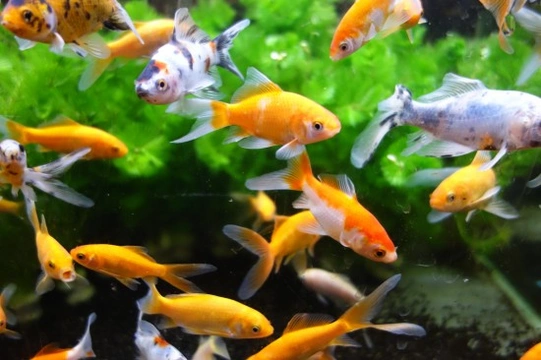
The behaviour of pet fish decoded
If you keep pet fish, you might not actually have paid much attention to how your fish act and interact with each other, although you have almost certainly at some point wondered why they are doing whatever it is that they are doing! Fish are of course a lot harder to interpret than mammals, and do not display the same patterns of personality, community and interaction as four legged pets, and generally go about their daily lives in a fairly routine manner!
That being said, it can be valuable for the keeper of tropical, coldwater or marine fish to gain a basic understanding of some of the behaviours that fish commonly exhibit, in order to identify any issues that arise or get an insight into what your fish are up to!
In this article, we will explain the meaning of some of the most common behaviour patterns that you might see your fish demonstrate within the community tank.
Coming to the surface of the tank
There are multiple reasons for why your fish might be hanging around at the very top of the tank; they might, for instance, be on the lookout for something to eat, particularly if they head to the top when someone approaches the tank. However, if they are finding the water temperature a little too cold and you have lights in the lid of the tank, they may be congregating near to the top in order to warm themselves up a little bit. Monitor the tank temperature and ensure that it suits the type of fish that you keep.
Gulping air at the surface
If your fish are at the top of the tank and appear to be gulping for air or actually sucking air above the surface, this indicates that the oxygen levels in the tank are not high enough for your fish to thrive. There can be a multitude of reasons for this, which you will need to investigate; perhaps you do not have enough aeration within the tank, or the tank is too dirty and the filters are not working efficiently enough. This is particularly likely to be the case if your tank is too small or overcrowded.
Recognition and taming
Fish will generally come to recognise the approximate times that they are fed at if fed at a similar time each day, and may well congregate around the area that the food comes from in anticipation! Some larger fish, such as Koi carp and Chichlids can actually become tame over time, and lose their wariness of people, meaning that you might even be able to hand feed them!
Signs of stress
If your fish appear to spend a lot of time hiding, chasing or being chased and generally start to lose condition in terms of their colours not being so bright and their fins and tails a little raggy, they may well be exhibiting signs of stress. If their tank is unstable, they are disturbed often or something about the water temperature, quality or condition is not suited to their needs, this can be the cause, but the most common cause of stress in fish is overcrowding the tank, or mixing too many predatory fish into your selection.
Identify overcrowding
A tank packed full of colourful, vibrant fish might be a delight to look at, but the vast majority of privately kept fish tanks of all types are actually overcrowded to some extent. Allowing a gallon of water per inch of fish is a good rule to follow, as if your tank is overcrowded your fish are exponentially more likely to fight and show signs of stress, and your filtration will struggle to handle the amount of waste that your fish generate.
Aggressive behaviour
Some fish are generally more aggressive than others, and many of the larger, more attractive fish are not suitable for keeping with quieter or smaller specimens. The Angelfish, for instance, is beautiful to look at, but will soon make a snack of a shoal of Neon Tetra’s! When stocking your fish tank, it is important to carefully consider the balance of the different types of fish you wish to keep, and cross-check them to ensure that they will all get on. One large fish with a selection of smaller fish is unlikely to be a good mix, and for some fish such as the Siamese Fighting Fish, only one male can be kept per tank.
Group mentality
Some fish are loaners, while some like to shoal, and will not be happy if kept on their own. Most tetra’s are shoaling fish, and so it is important to make sure that you keep a group of at least six together in order to enable and allow for their natural behaviour, or they will become stressed and unhappy.
Eating and avoiding being eaten
How fish think can largely be broken down into two aspects: Getting enough food, and avoiding becoming someone else’s food! This is the most succinct way of explaining how fish tend to go about their daily lives, both looking for their next meal and avoiding becoming one to a larger fish. Ensure that your tank is well planted with enough ornaments and either live or plastic plants to provide hiding places for smaller fish and shy fish, in order to minimise the stress of worrying about predators and keep all of your fish happy and healthy.



